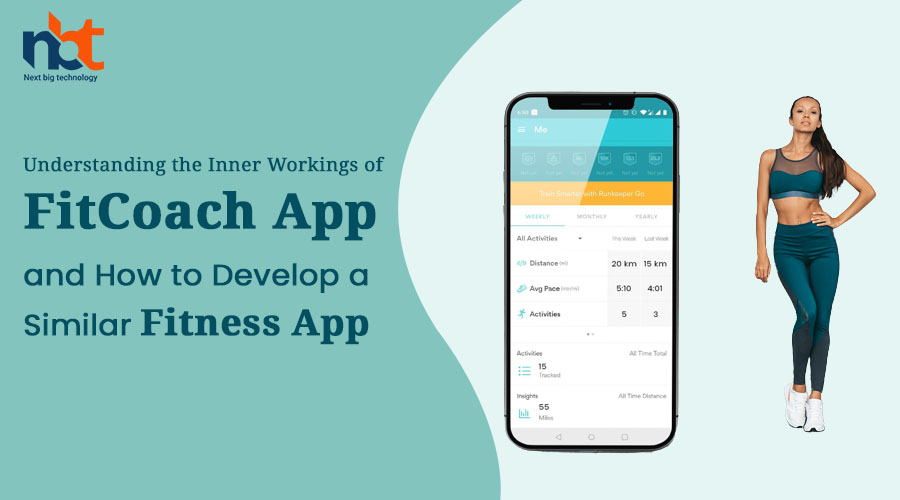Introduction: In the era of digital fitness, mobile applications have become indispensable tools for individuals seeking guidance, motivation, and personalized workout programs. FitCoach is a popular fitness app that offers users comprehensive fitness plans, tracking features, and personalized coaching. In this article, we will delve into how FitCoach app works and provide insights into developing an app similar to FitCoach.
- An Overview of FitCoach: FitCoach is a multifunctional fitness app that aims to empower users in achieving their fitness goals. It combines various features, including personalized workout plans, nutrition guidance, progress tracking, and virtual coaching, to provide a holistic fitness experience.
- Personalized Workout Plans: FitCoach offers personalized workout plans tailored to the individual needs, goals, and fitness levels of its users. Upon sign-up, users are prompted to provide information about their fitness objectives, current physical condition, and exercise preferences. Using this data, the app generates customized workout routines that align with the user’s goals and abilities.
- Exercise Library and Video Demonstrations: FitCoach provides a diverse exercise library, including strength training exercises, cardiovascular workouts, flexibility routines, and more. Each exercise is accompanied by detailed instructions and video demonstrations to ensure proper form and execution. Users can access these resources within the app to understand and follow the exercises correctly.
- Progress Tracking and Analytics: FitCoach allows users to track their progress over time. The app features tools for recording workout sessions, tracking sets and repetitions, and monitoring physical improvements. Users can view their workout history, measure their performance, and receive insights on their progress through visual charts and statistics. These tracking capabilities help users stay motivated and assess their fitness journey effectively.
- Nutrition Guidance: FitCoach recognizes the importance of nutrition in achieving fitness goals. The app often includes features that provide basic nutritional guidance, such as calorie tracking, macronutrient breakdown, and meal planning suggestions. Users can log their meals and receive recommendations for a balanced diet that complements their workout plans.
- Virtual Coaching and Motivation: To offer a more personalized experience, FitCoach integrates virtual coaching elements. This can include automated reminders for workouts and meals, motivational messages, or even virtual trainers that provide real-time guidance during workouts. These coaching features aim to keep users motivated, accountable, and engaged throughout their fitness journey.
- Integration with Wearable Devices: FitCoach often integrates with popular wearable fitness devices, such as fitness trackers or smartwatches. This integration enables users to synchronize their workout data, including heart rate, steps taken, and calories burned, providing a comprehensive overview of their activity levels. Such integration enhances the accuracy of tracking and offers a more holistic view of the user’s fitness progress.
- Social Features and Community Support: FitCoach acknowledges the importance of social support and interaction in the fitness journey. Some versions of the app incorporate social features that allow users to connect with others, share achievements, participate in challenges, and provide encouragement to fellow fitness enthusiasts. These social elements foster a sense of community and accountability, further motivating users to stay on track.
Developing an App Like FitCoach: If you aspire to develop an app similar to FitCoach, here are some key steps to consider:
a. Define Your App’s Unique Value Proposition: Identify what sets your fitness app apart from FitCoach. Determine the specific features, functionalities, or target audience that will differentiate your app in the market.
b. User Experience and Interface Design: Focus on creating an intuitive and visually appealing user interface. Prioritize ease of navigation, exercise discovery, and seamless integration of features to enhance the overall user experience.
c. Personalization and Customization: Develop algorithms or user input mechanisms that generate personalized workout plans based on individual goals, preferences, and fitness levels. Incorporate customization options to allow users to adapt their workouts and nutrition plans to their specific needs.
d. Exercise Library and Demonstrations: Curate a diverse exercise library with proper instructions and video demonstrations. Ensure the accuracy and quality of the content, and consider collaborating with fitness professionals or trainers to enhance the credibility of the exercises.
e. Progress Tracking and Analytics: Implement robust tracking features that allow users to monitor their progress, set goals, and visualize their achievements. Consider incorporating visual charts, statistics, and progress photos to provide users with comprehensive insights into their fitness journey.
f. Nutrition Guidance and Integration: Offer basic nutritional guidance, such as meal planning suggestions or calorie tracking features. Consider integrating with popular nutrition databases or partnering with registered dietitians to provide accurate and reliable nutritional information.
g. Virtual Coaching and Motivation: Incorporate motivational features, such as reminders, virtual trainers, or customized notifications to keep users engaged and motivated. Explore possibilities for real-time coaching or feedback mechanisms to enhance the app’s interactivity.
h. Testing and Continuous Improvement: Conduct extensive testing to ensure the app’s functionality, usability, and performance. Gather user feedback throughout the development process and iterate on the app based on their suggestions to enhance user satisfaction and engagement.
Conclusion: FitCoach has emerged as a comprehensive fitness app that caters to users’ workout needs, progress tracking, and motivational support. By understanding the key features and considerations involved in developing a similar app, you can create a valuable fitness application that empowers users to achieve their health and fitness goals. Prioritize personalization, user experience, exercise library quality, and integration with wearable devices to create a unique app that stands out in the competitive fitness market. Remember, continuous improvement, responsive development, and user engagement are vital for the long-term success of your fitness app.









